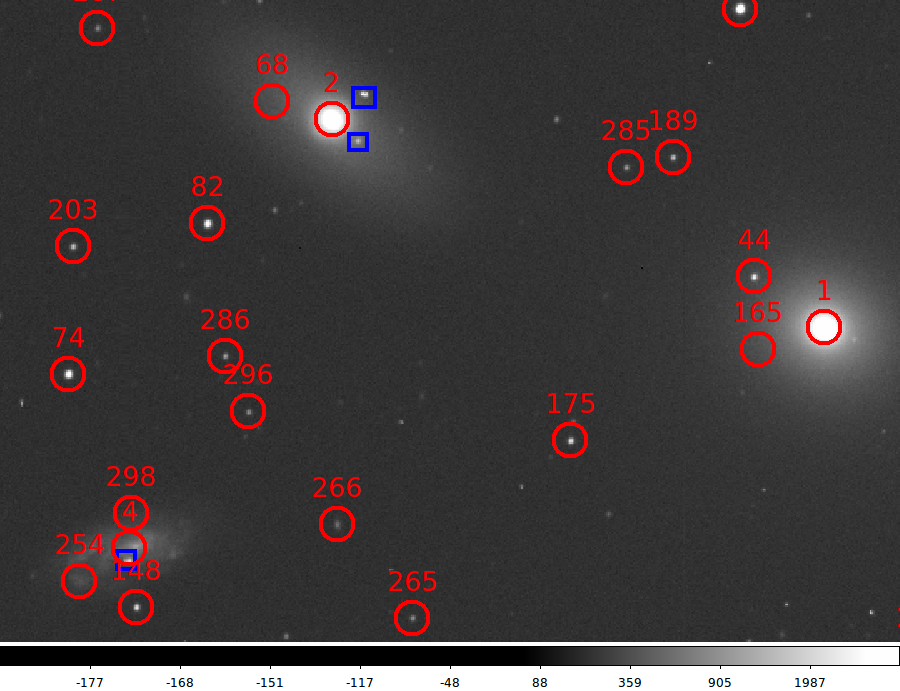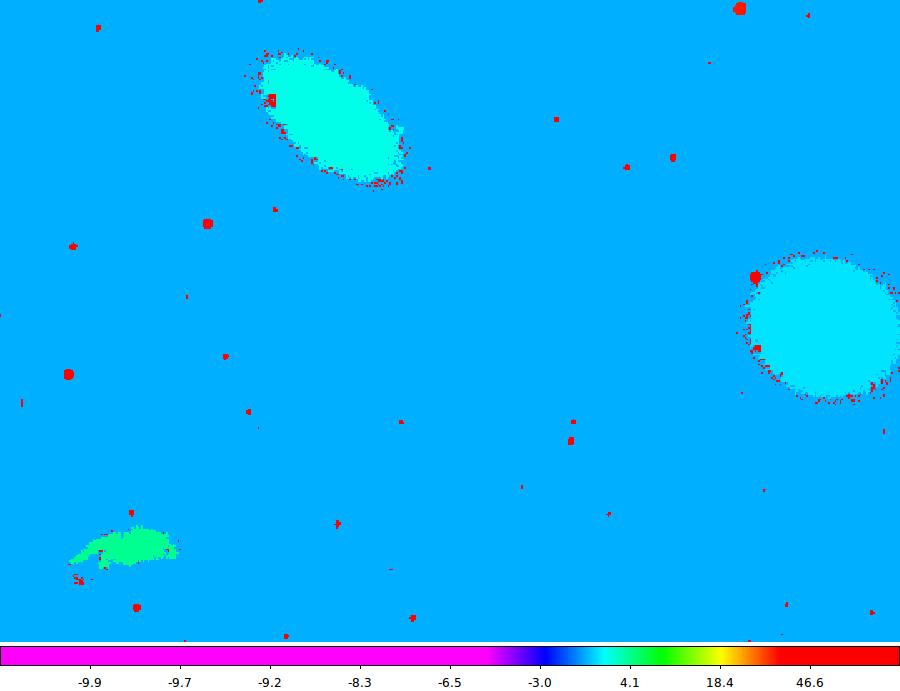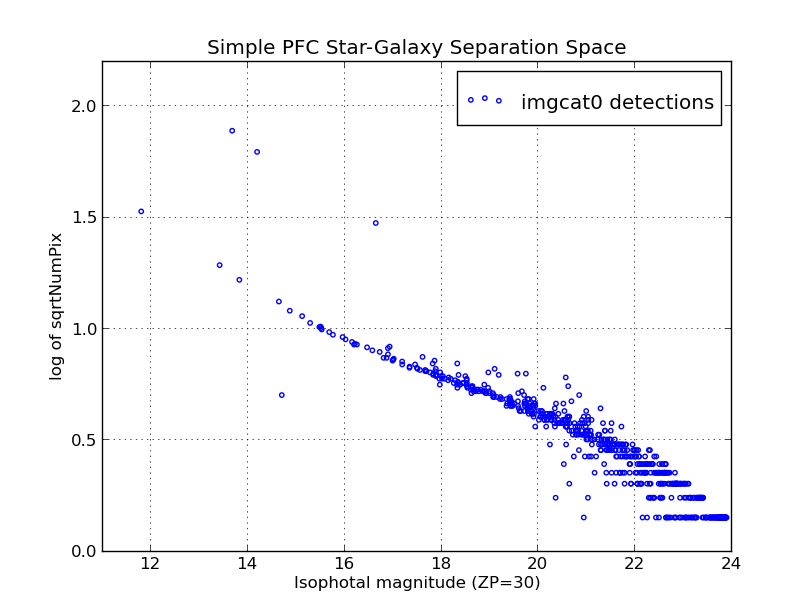Measuring a PFC image with a few large galaxies.
Last updated: Dec21,2018
Here I use the PFC image Rsco2039.fits from my
ds9_profiles test data set. I
assume that you have unpacked the data set.
% cd ..../Test_ds9_profiles/tcat1 # I made tcat1
% imgcat0 ../images/Rsco2039.fits pfc 10.0
The products of such a run are numerous. Here is a brief table that summarizes the files involved:
Rsco2039.fits - the images analyzed (just a copy)
Rsco2039_bkg1.fits - background map
Rsco2039_sigma.fits - image of the noise distribution (commonly a constant)
Rsco2039_detsig.fits - detection significance map (i.e. all pixels 10-sigma above sky in this example)
Rsco2039_label0.fits - connected (and labeled) pixel map
Rsco2039.cat0 - ascii catalog file
Rsco2039.table,params,parlab-
The table file of simple image parameters, basically a table file version of Rsco2039.cat0
Other less important files:
Active.Images - list of images (used mostly by other scripts)
BGboxes.reg - ds9 regions file show the background boxes used
bgmapper.mess - summary of things associated with background mapping
Next I use the script paint_table_sources to
overplot ds9 markers on my detected objects.
% ds9_open 900 900
% ds9_imstats Rsco2039.fits Y # I load the original image to frame 1
% paint_table_sources Rsco2039 1 N
Enter minimum number of pixels in sources for plotting (5): 10
Enter ds9 color for regions (red): red
Enter acircular aperture radius in pixels (10): 10
 |
|
A portion of the NGC3379 PFC image measured in the imgcat0
run using a detection threshold of 10.0 (sigma). The 3 large
galaxies (N3379, N3389, and N3384) are detected, as well as
numeroud stars. This took about 20 seconds to run on scohome.
The obsject identifications are made with the script named paint_table_sources.
I manually added the blue squares to indicate a few bright stars that were
not detected bu imagcat0. This is clearly due to the fact that these
stars lie within the images for NGC3384 (top) and NGC3389 (lower-right).
We'll need more advance local mapping of the background to automatically
detected and classify these sources. However, for the purposes of WCS and
ZP calibrations we can easily use the many detections from this run.
|
 |
|
Here we the same area as above using the label0 detection image. The
false colors simply reflect the size ordering of the detection. The large
circular area on the right, labeled as "1", is the largets object detected in
the image and this is NGC3379. I have registered this image to have the same
position as the figure above. I couold have used paint_table_sources to label sources, but
this would confuse the view.
|
 |
I can use xyplotter_auto to view a useful parameters space.
table_mathop.sh Rsco2039 sqrtNumPix log10 none -1.0 pnew N
xyplotter_auto Rsco2039 q q 10 N
# adjust the Axes.10 and List.10 files (if I want!)
xyplotter List.10 Axes.10 N
This is a useful space in that it seems to separate stars and galaxies to some degree.
The 3 large points in the upper left are (probably) N4479, N3384, and N3389.
It would be extremely useful to have a tool that let use mark this
space with an interactive cursor, and then zoom to the selected source in a ds9 view
of the image (Rsco2039.fits). As explained below, this capability
is provided in the routine named imgcat0_panner.
|
Back to calling page


